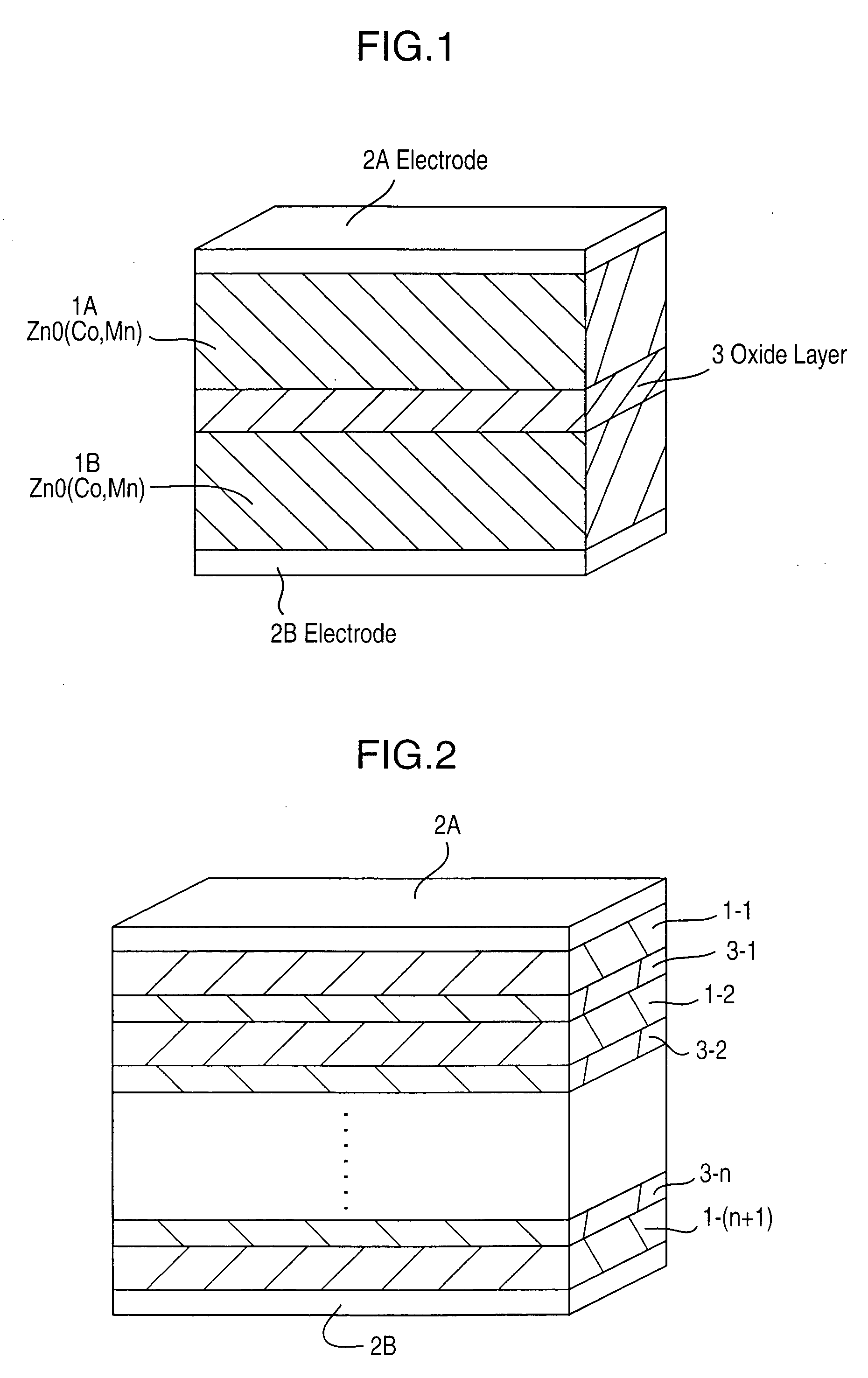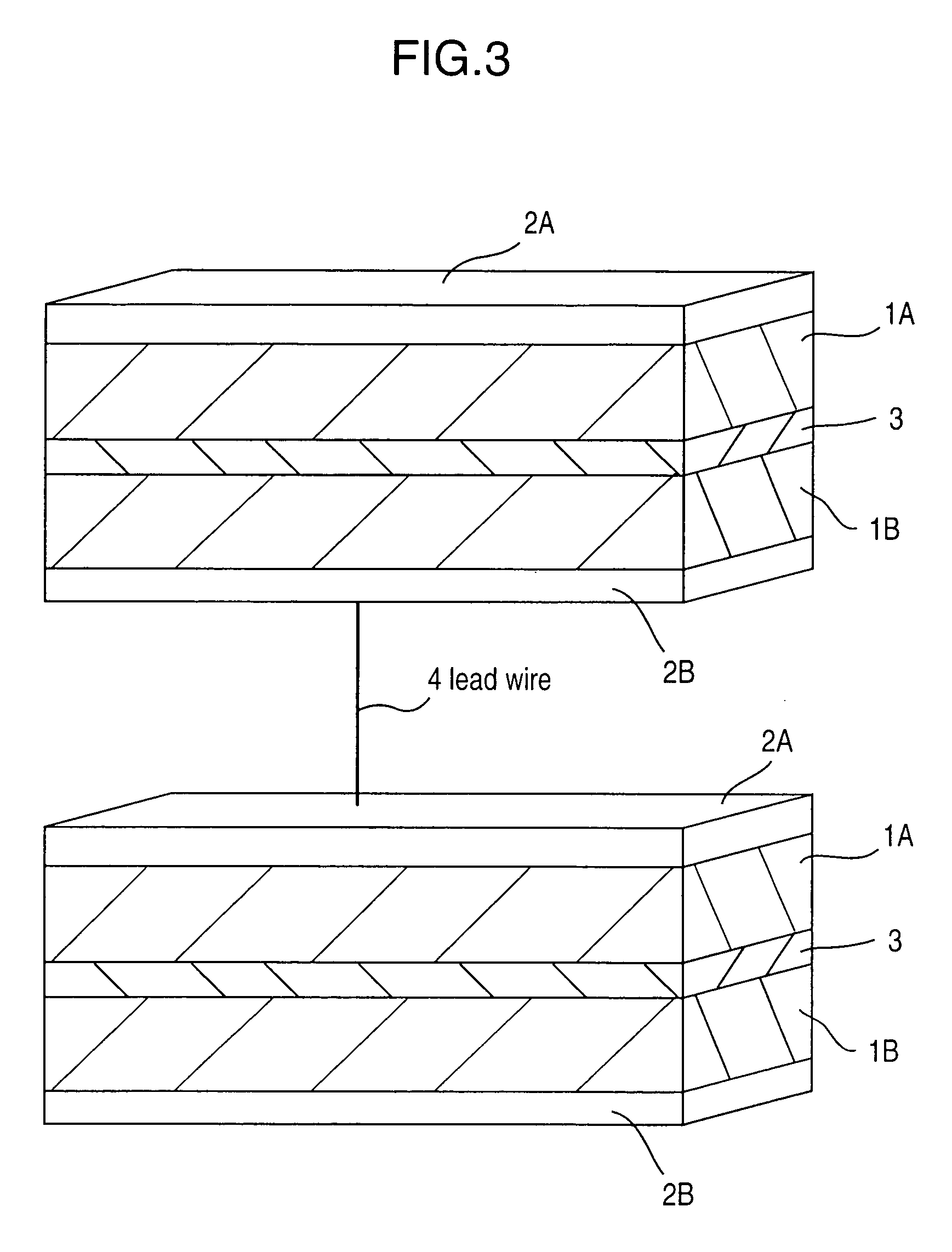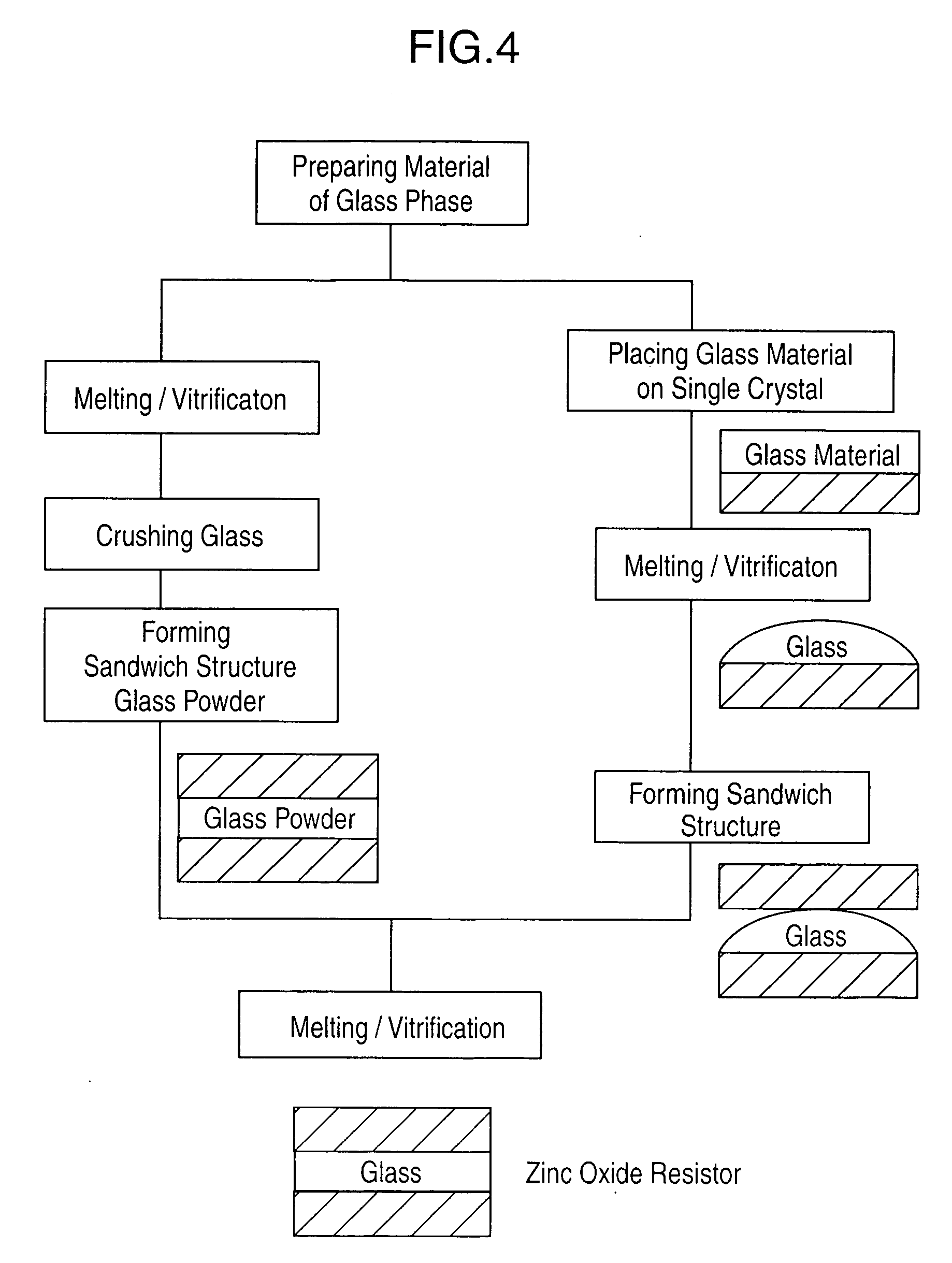Zinc oxide resistor and its manufacturing method
- Summary
- Abstract
- Description
- Claims
- Application Information
AI Technical Summary
Benefits of technology
Problems solved by technology
Method used
Image
Examples
example
Inventive Example 1
[0072] Each of two zinc-oxide single crystals was in contact with a cobalt-oxide sintered body, in an oxygen flow at 1200° C. for 3 hours to diffuse cobalt into each zinc-oxide single crystal so as to prepare two cobalt-doped zinc-oxide single crystals. A quantity of the resulting solid solution of cobalt was calculated as about 1 at % based on optical spectrum. Then, 0.8772 g of boron oxide, 8.8068 g of bismuth oxide, 0.1517 g of cobalt oxide and 0.16431 g of manganese oxide were measured and mixed together. The obtained mixture was put in a platinum crucible, and molten at 900° C. in an oxygen flow. Then, the molten mixture was flowed out of the crucible, and solidified to obtain a bismuth-and-boron-containing oxide glass. After crushing the glass, the obtained glass powder was dredged on one of the prepared cobalt-doped zinc-oxide single crystals (5×5×0.5 mm), and another zinc-oxide single crystal was superimposed on the single crystal with the glass powder to...
##ventive example 2
Inventive Example 2
[0074] Each of two zinc-oxide single crystals was in contact with a cobalt-oxide sintered body, in an oxygen flow at 1200° C. for 12 hours to diffuse cobalt into each zinc-oxide single crystal so as to prepare two cobalt-doped zinc-oxide single crystals. Then, 0.8772 g of boron oxide, 8.8068 g of bismuth oxide, 0.1517 g of cobalt oxide and 0.16431 g of manganese oxide were measured and mixed together. The obtained mixture was put in a platinum crucible, and molten at 900° C. in an oxygen flow. Then, the molten mixture was flowed out of the crucible, and solidified to obtain a bismuth-and-boron-containing oxide glass. After crushing the glass, the obtained glass powder was dredged on one of the prepared cobalt-doped zinc-oxide single crystals (5×5×0.5 mm), and another zinc-oxide single crystal was superimposed on the single crystal with the glass powder to form a sandwich structure.
[0075] Without particular pressing, the sandwich structure was heated at 1000° C. i...
PUM
 Login to View More
Login to View More Abstract
Description
Claims
Application Information
 Login to View More
Login to View More - R&D
- Intellectual Property
- Life Sciences
- Materials
- Tech Scout
- Unparalleled Data Quality
- Higher Quality Content
- 60% Fewer Hallucinations
Browse by: Latest US Patents, China's latest patents, Technical Efficacy Thesaurus, Application Domain, Technology Topic, Popular Technical Reports.
© 2025 PatSnap. All rights reserved.Legal|Privacy policy|Modern Slavery Act Transparency Statement|Sitemap|About US| Contact US: help@patsnap.com



